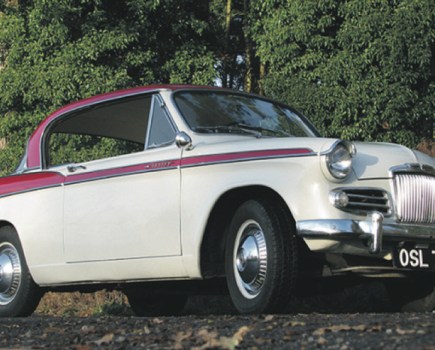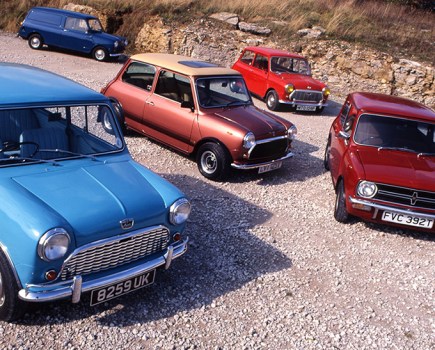The fun factor of driving a classic car that’s slower than modern vehicles, takes more effort to brake and steer and requires careful planning before negotiating a corner can become hard work once the rose-tinted glasses have been removed. If you find yourself in such a dilemma, and aren’t too concerned about originality, then modifications whether they are period or not are often the answer.
The MG TD is one such sports car that offers all the nostalgia of a post-war classic, but requires patience and skill to drive it in modern traffic. Remember that when the TD first appeared in 1949, it was advanced for its time, with independent double wishbone suspension at the front and coil springs, lever arm dampers all round and leaf springs at the rear. It weighed in at a mere 876kg, so its 54bhp 1250cc overhead-valve XPAG engine felt quite lively (about as lively as a classic Mini with a 1098cc A-series engine) and was capable of reaching a top speed of 80mph.
Nowadays, having no synchromesh in first gear for instance in a standard TD, isn’t too problematic, but setting off can be a little hesitant due to excessive friction of the clutch cable and the angle of the actuator arm. More modern clutch rods were introduced, which were also troublesome, although there are now adjustable clutch rods that seem to solve these problems, along with methods of altering the angle of the actuator arm. However, a more popular solution to the gearchange dilemmas is to fit a Ford Type 9 five-speed gearbox.
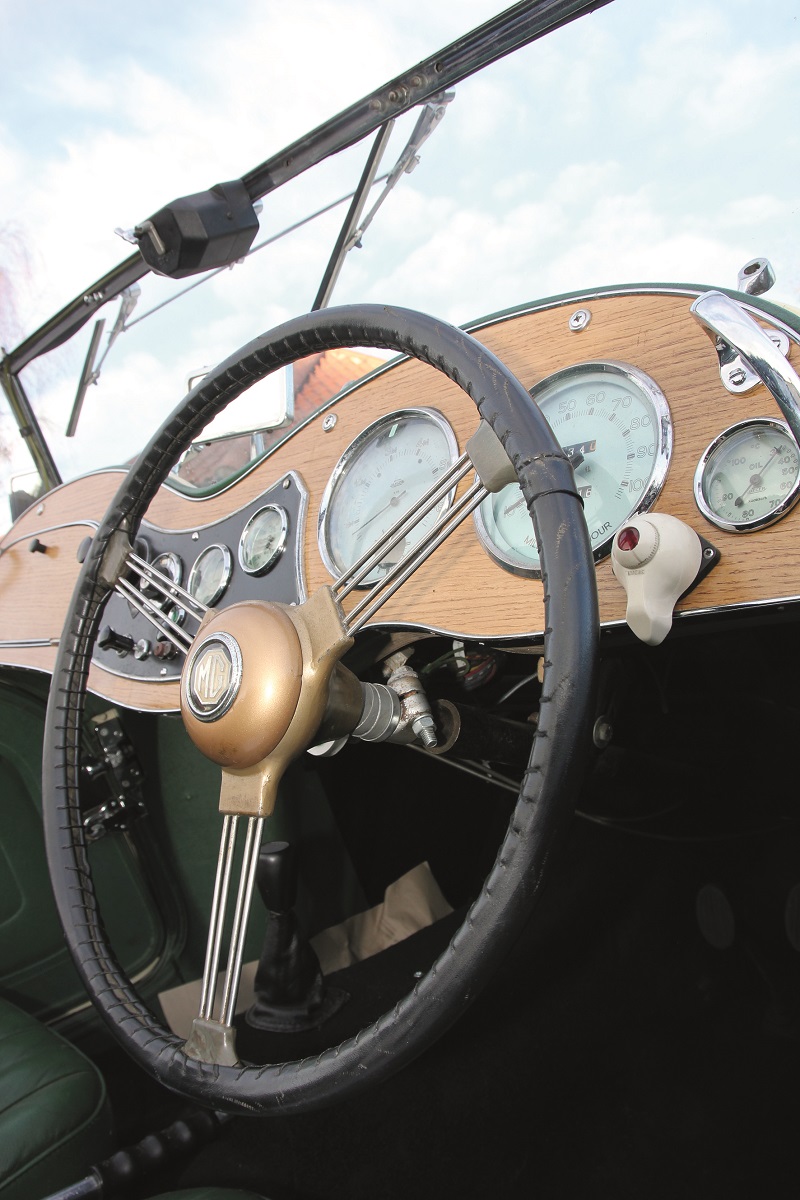
The TD seen here has such a gearbox and it’s a dream to drive when compared with a standard transmission. There’s no need to be sympathetic when selecting first, even if the car is rolling at slow speed. Changing down gears is just as straightforward and can also provide some useful engine braking.
Such a conversion isn’t cheap at around £2500 for a drive-in, drive-out swap, or £1500 if you do it yourself, but the benefits are huge, especially if the car is frequently used.
The brakes on an original standard TD can feel a little wooden and require the benefit of the aforementioned engine braking offered by the Ford gearbox. With drum brakes all round, competition brake shoes can offer more braking efficiency and the use of stainless-steel liners for the brake master cylinder reduce the risk of internal corrosion. Alloy brake drums with cooling fins, were once manufactured by the likes of Alfin and are still available through Typecast Engineering of Leicestershire.

It’s also feasible to fit a universal remote brake servo with a take-off added to the inlet manifold. This won’t increase braking efficiency, but it should reduce how hard you need to stamp on the brake pedal. Disc brake conversions are an option, but quite complicated. The MGA’s front brake discs and calipers for instance, can be fitted, requiring the hubs as well, so a four-stud wheel has to be fitted (TDs have five studs).
The steering and suspension on the TD keeps you on your toes and requires a little forward planning before cornering. Brown and Gammons offer a tempting upgrade for the front, which includes an anti-roll bar, MGA/MGB coil springs with new spring pans and wishbones. All of the components are listed and priced separately on their website, with coil springs at £35.28 each and anti-roll bars at £76.70.
The liveliness of the XPAG engine is something that can be further improved upon. In the case of the car seen here, it wasn’t slow and hesitant, possibly aided by the fact that it had a MGA rear axle with a 4.55:1 final drive ratio that’s more suited to the Ford Type 9’s gear ratios (standard axles have a 5.125:1 final drive ratio on early TDs and 4.875:1 for the Mk2). However, should you desire more performance, then there are a number of options.
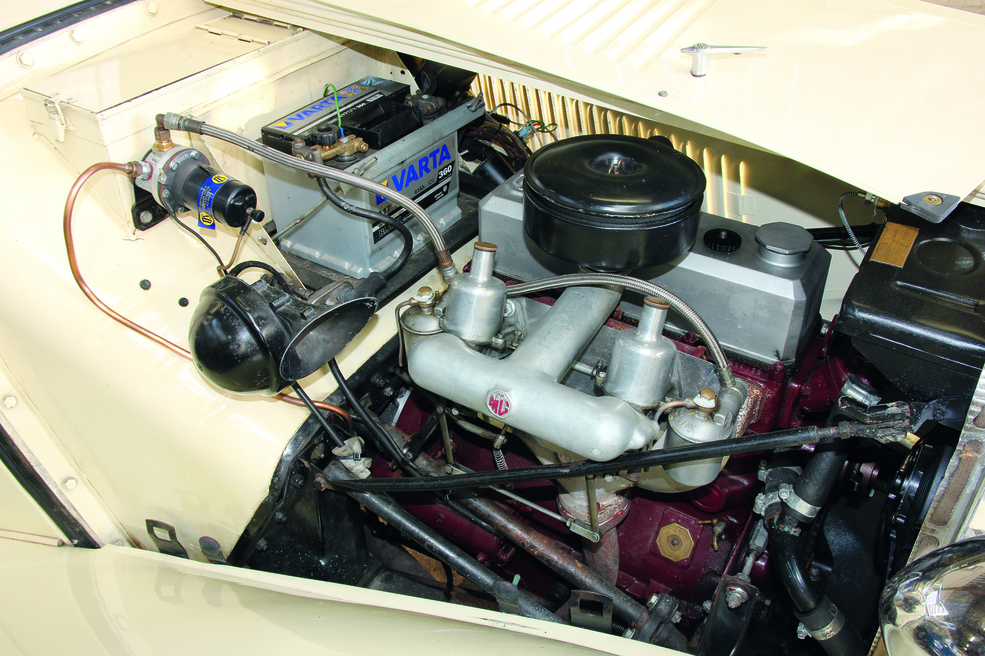
The TD’s 1250cc OHV XPAG four-cylinder engine produced a modest 54bhp when it was first released, but this figure rose very slightly to 57bhp when the Mark II TD was introduced, whose engine had larger valves, a higher compression ratio and larger twin SUs. The TF also used this engine until September 1954. Reliability modifications include electronic ignition conversions and uprated crankshaft oil seals. Performance camshafts, larger pistons and all the necessary parts to build an engine are available from specialists such as Brown and Gammons. Complete fast road engines are available from Peter Edney, with prices starting at £4300+VAT.
Supercharger conversions have long been popular, and Moss along with specialist Steve Baker offer a conversion kit for £3300-£4110.
Upgrades are not always concerned with performance. Engine servicing can be made easier by replacing the traditional canister-style oil filter for a spin-on type. Expect to pay around £100 from the likes of Moss, NTG and other specialists. These conversion kits vary in what you get for your money. NTG’s adapter for the early TD for instance, includes a spin-on filter that’s housed inside an original-looking canister.
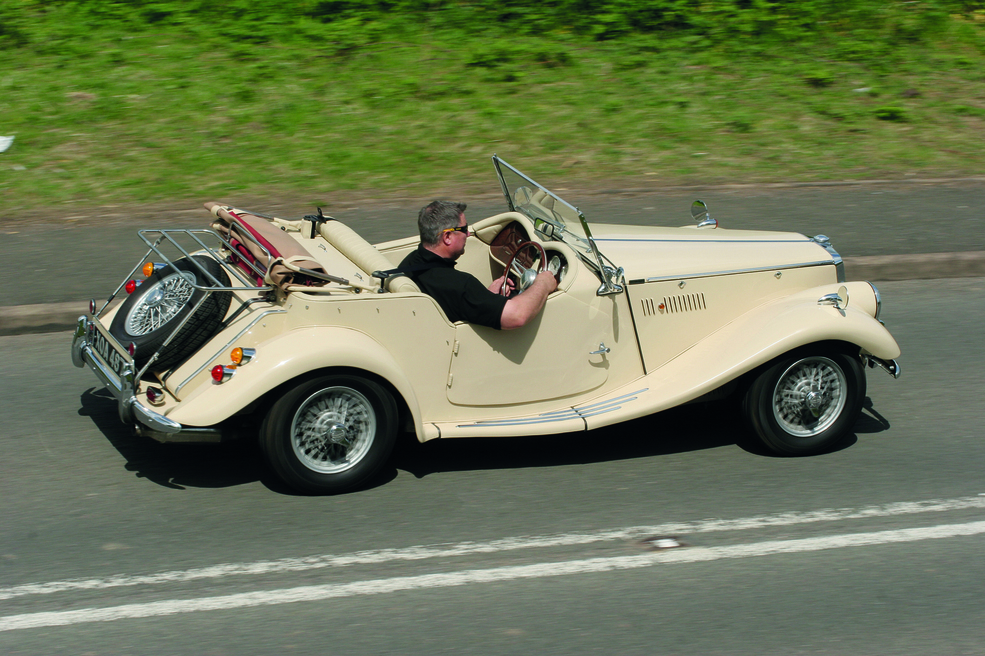
Sitting inside the cockpit of this TD, the separate seat bases offer adequate support, whilst the bench seat style back offers more shoulder space, but there aren’t any seatbelts. Fortunately, seatbelts can be fitted. Similarly, the indicators are incorporated into the stop and tail lights at the rear and the sidelights on the front wings. Separate indicators can be fitted instead.
With the seemingly high price of such classic cars, many of the modifications we’ve outlined are a small proportion of its value. So if originality isn’t a concern, it’s reassuring to discover a car that’s approaching 70 years old can still be updated and appreciated.


